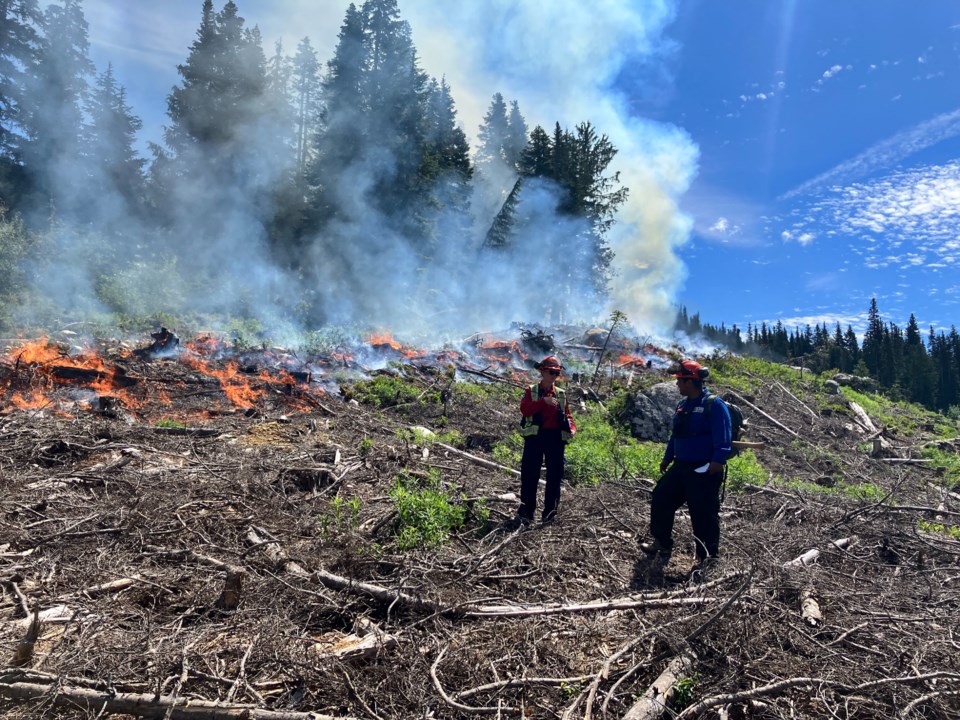As the flames from the Casper Creek wildfire have inched closer over the past several weeks, N’Quatqua Chief Micah Thevarge couldn’t help being reminded of the COVID-19 pandemic, when flocks of tourists in search of open, natural spaces came through the Indigenous community at the head of Anderson Lake, despite the Nation’s wishes.
“It was pretty chaotic. There were a lot of terrified people in our communities and of course it was hard to shut down to the outside world. People just wanted to come and look and be out in nature, but of course the [virus] was spreading so rapidly that we, as a leadership, said, ‘OK, we can’t have anyone else coming in from the outside,’” Thevarge told Pique this week.
Thevarge and the N’Quatqua have felt a familiar sense of déjà vu in recent weeks, as the Casper Creek wildfire has doubled in size to, at press time, 4,056 hectares, while the nearby Highline Road is closed to the public to keep the narrow stretch of dirt road clear for firefighters and community members.
“It’s just kind of concerning, with the amount of tourists that are out there and are still coming over,” Thevarge said. “When communities are affected and being evacuated, it just seems like the backcountry is never shut down to people, and it just adds more pressure to our members and our community.”
Located roughly 50 kilometres northeast of Pemberton, the area is a draw for local recreationalists and vacationers looking for a rustic alternative to the corporate sheen of Whistler. But, of course, resort locals and other second-homeowners have the luxury of returning to their primary residence, if need be. For the N’Quatqua and Tsal’alh, another St’át’imc First Nation located on the shores of Anderson Lake, there is often no such option. And as extreme weather events grow in both frequency and severity, it tends to be the more remote, Indigenous communities that bear the brunt of the impact, as was the case in the 2021 heat dome and subsequent fire that ravaged Lytton.
“It's going to be a yearly thing now. The weather has changed so much and the backcountry is so dry,” said Thevarge, who discussed the mental and emotional toll the recent wildfire has had on the community.
“There’s been a few mornings when you wake up and there would be ash all over your vehicle. You can see the flames at night, so everyone is obviously concerned,” he added. “It’s taken a toll on people, and especially people with asthma and stuff, wondering what we’re going to do if it comes to evacuating.”
For the moment, no such evacuation order is in place, with the suspected lightning-caused fire still about 10 to 15 kilometres away from the N’Quatqua, Thevarge estimated. An evacuation order is in place, however, for all properties in the Tsal’alh and Seton Portage areas. (Tsal’alh Chief Randy James did not return a request for comment.)
An evacuation alert has also been issued for properties south of the existing evacuation order on the west side of Anderson Lake.
There are currently 36 BC Wildfire Service personnel, 31 contract crew, and several structure protection personnel assigned to the fire. That’s in addition to five helicopters, and 11 pieces of heavy equipment onsite.
Both the N’Quatqua and Lil’wat Nations have sent firefighters to assist the efforts, with close to a dozen volunteers answering the call from Mount Currie in recent days, according to Lil’wat Chief Dean Nelson. As two of 11 distinct, self-governing communities comprising the St’át’imc Nation, the Lil’wat and N’quatqua have long held close familial, cultural and linguistic ties, and Nelson said there was no hesitation in lending a hand.
“We have to stand for what we value,” he added. “We’ve been fortunate here in Lil’wat and our surrounding area that we haven’t been impacted by those fires. I know for a fact that if we did need help that there are people who would come to our aid. It’s reciprocal. If someone needs help, you help the best you can and pray that there is help when you do need it.”
Both the Lil’wat and N’Quatqua count a number of certified professional and contract firefighters, but, in the midst of B.C.’s worst fire season in recorded history, they were all deployed around the province, Nelson said, which is why he put a call out for help on social media.
The BC Wildfire Service said ground crews are working to extinguish fire spots closest to properties on the fire’s southwest flank. On Monday, July 31, planned ignitions were carried out and were to continue through the week to remove unburnt fuel between Six Mile Creek and the fire perimeter. Fire activity remains low on the northeast flank of the fire, while firefighters on the southeast flank near Seton Portage continue to patrol and extinguish hotspots within the fire perimeter, closest to the community.
Located approximately 33 km west of Lillooet, in proximity to Anderson Lake, the fire was discovered July 11 and is suspected to be lightning-caused.
Stay up to date with wildfires in the province at wildfiresituation.nrs.gov.bc.ca.
Further information will be posted at slrd.bc.ca, and notices through the SLRD’s Alert messaging service, which you can subscribe to for free at slrd.bc.ca/slrdalert to receive emergency notifications via email, text, and voicemail.




